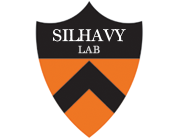Heat-shock proteins DnaK and GroEL facilitate export of LacZ hybrid proteins in E. coli
Type
The use of lacZ gene fusions, producing a hybrid protein containing an amino terminus specified by a target gene fused to the functional carboxy terminus of beta-galactosidase, has facilitated the study of protein targeting in various organisms. One of the best characterized fusions in Escherichia coli is phi(lamB-lacZ)42-1(Hyb), which produces a hybrid protein with the signal sequence and 181 N-terminal amino acids of the exported protein LamB, attached to LacZ. In common with other LacZ hybrids, the LamB-LacZ(42-1) protein is poorly exported from E. coli, conferring a Lac+ phenotype. beta-Galactosidase activity decreases markedly when cells producing the LamB-LacZ protein are grown at 42 degrees C or when a heat-shock response is induced at lower temperatures by overproducing heat-shock factor RpoH3, indicating the LacZ hybrids are being efficiently targeted to the cell envelope. We now report that the heat-shock proteins DnaK and GroEL can, in sufficient amounts, decrease beta-galactosidase activity and facilitate the export of lacZ-hybrid proteins.

